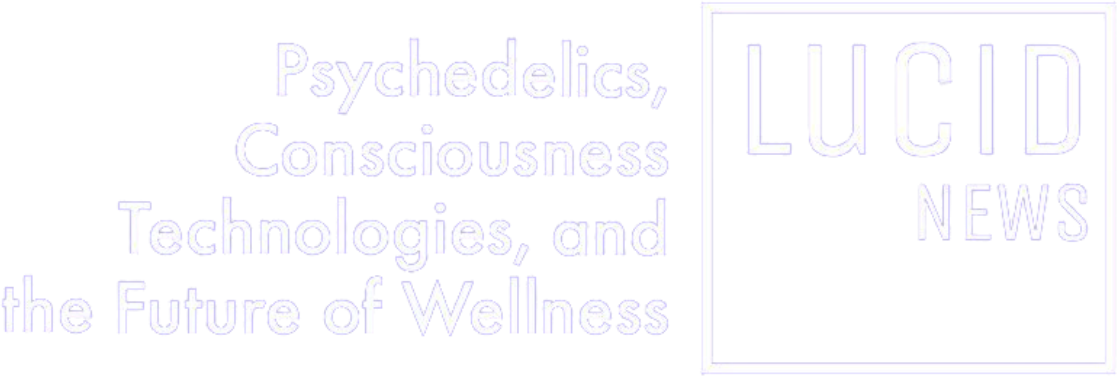Is the High Cost of Psychedelic Therapy Worth It?

Floris Wolswijk, the founder of Blossom, breaks apart a recent study on LSD and anxiety in this monthly column in cooperation with Lucid News. Blossom is your go-to place to find insights on the latest psychedelic research and the companies bringing this into practice.
Psychedelic treatments are right around the corner. If everything goes right, MDMA-assisted therapy for PTSD will be FDA approved by the end of 2024. Similarly, psilocybin for treatment-resistant depression might see approval by 2026.
Who will pay for these treatments? Unlike an antidepressant, psychedelics will not be a take-home treatment. Compared to traditional talk therapy, the hours invested upfront will be much higher. Will insurance companies pay for psychedelic-assisted therapies?
In this column I will examine the costs and benefits of psychedelic-assisted therapy, look at ketamine for depression as a comparator, and show that the economic case for PAT to be less certain than many believe.
Time Equals Money
A treatment protocol that incorporates three MDMA-assisted therapy (MDMA-AT) sessions, will cost roughly $11,500.
That is according to the economic analyses that Elliot Marseille, from the Global Initiative for Psychedelic Science Economics (GIPSE) and colleagues from the University of California, San Francisco, have done this year. In the 2022 Marseille study, the total hours spent with licensed therapists accounted for 90% of the costs, of which roughly half were spent during the MDMA-AT dosing sessions. The other costs include time spent on screening, intake or preparation, and integration sessions. Only 10% of the costs are related to pharmacy, lab and screening tests.
The total time spent with two therapists in the MDMA-AT treatment protocol is 42 hours. The Marseille study bases its numbers on the protocol used in the MAPS Phase II clinical trial, which is described in the Mitchell study. Patients receive three 90-minute preparatory sessions, three eight-hour MDMA-AT sessions, followed by three integration sessions. Altogether, therapists spend upwards of 90 hours treating each patient. The cost per hour is about $125.
What is missing from this picture is the cost of MDMA itself. Medicine sales are how MAPS Public Benefit Corporation, the commercial arm of the MAPS non-profit, plans to make money. As MAPS PBC will likely get exclusivity for the use of MDMA-AT for PTSD as part of the FDA approval process, they plan to use the price of the MDMA as the variable to bring in money to reinvest back into training more therapists and making MDMA-AT more widely available.
This does sound a lot like how traditional pharma companies make money. Invent a medicine, charge more for it than it costs to make, and profit handsomely. As MAPS (the nonprofit) owns all the shares in MAPS PBC, they don’t plan to pay large dividends to shareholders, but rather reinvest everything into their nonprofit programs. So, what kind of price will they put on the MDMA?
That is a question Marseille grappled with during his presentation at the recent Interdisciplinary Conference on Psychedelic Research (ICPR 2022). The actual retail price of MDMA will only be determined after the whole treatment program is approved by the FDA, so the numbers he put forth were only for illustrative purposes.
According to Marseille, the price range being considered for MDMA is between $1 and $20 per milligram. In the Mitchell study, the total amount of MDMA given to patients was 480 milligrams, which would put the total cost of MDMA between $480 and $9,600 – it is either an insignificant sum per treatment or nearly half the price tag.
Even at the highest cost, Marseille argues that payers (insurance companies) will see net savings within five years, and much greater savings at the ten-year mark. But before we dive into the savings, let’s take a step back.
Do we even know if psychedelic-assisted therapies have long-term benefits?
Remission From Mental Illness, but for How Long?
In the Blossom database, I track over 400 clinical trials that explore the medical effects of psychedelics. A lot of media has, rightly, reported on the extraordinary benefits of psychedelics in alleviating depression, PTSD, and addiction. But data on long-term effects are severely lacking.
Out of all the people who participated in those clinical trials, only 212 have been followed up after a period longer than 3 months.
The good news for MAPS is that nearly half of these participants come from the long-term follow-up of the Mitchell study. That research, led by Lisa Jerome, finds that a year after treatment 67% of participants are in remission. In addition, data from 16 participants who took part in MAPS’ Phase I study support that the benefits hold up four years later, with 74% reporting continued meaningful improvements and similar ratings on a measure of PTSD between the first and fourth year.
The less favorable news is that MDMA-AT isn’t a one-and-done solution. The Jerome study reports that a year later 40% of the participants were receiving regular therapy, 46% were on psychological medications, and 10% sought out MDMA outside of the clinical trial.
Even less encouraging is the data from a follow-up study led by Robin Carhart-Harris on using two high doses (25mg) of psilocybin for treatment-resistant depression. After six months, 31% of the 20 patients showed a positive response (meaning a >50% decrease in symptoms), which was a drop from the 47% measured five weeks after treatment. In the Carhart-Harris study, a quarter of participants sought out psilocybin (magic mushrooms) during the follow-up period. A quarter also started therapy again or started a new course of antidepressants.
Seeking out new treatments (or more psychedelic journeys) isn’t a bad sign by itself. It can also signal that people take more charge of their mental health. Instead of just accepting their PTSD symptoms, many patients in the MAPS trials reported improvements in many areas of their life. Secondary analyses of the MAPS trials find improvements in depression, eating disorders, and chronic pain.
A possible explanation for the gap in efficacy between PTSD and depression studies could be the nature of the illness. PTSD is easier to pinpoint to one event or season of one’s life. The cause of depression is more ambiguous. Though psychedelic treatments aim to resolve the broad underlying causes of illness, having broad non-specific actions might hamper their effectiveness.
Up to this point, we’ve looked at the data from clinical trials. From one perspective, the care received here is of the highest quality. The trials have the most motivated patients, they are led by therapists who developed the treatment, and they’re executed by a team focussed on a shared goal. But it is good to remember that real-world settings allow individualised treatments that can include more therapy or additional psychedelic-assisted sessions, which could improve the long-term results.
Luckily, there is already a trove of real-world data available for ketamine-assisted therapy that we can refer to for an understanding about long-term effects. Though different from classical psychedelics and MDMA, ketamine provides a window into the real viability of psychedelic-assisted treatments.
Is It Worth It? The Curious Case of Esketamine
Since the turn of the century, we’ve been using ketamine to treat depression. Ketamine costs pennies on the dollar and moderately, but very quickly, relieves depression and suicidal ideation. For these benefits, which usually last up to seven days, it should be praised widely.
Ketamine was first synthesized in 1962 and has been off-patent for decades. Because no company can benefit from owning the intellectual property, while studies have shown the efficacy of ketamine for treating depression, no drug developer has made the effort to do large-scale Phase III trials to rigorously examine these benefits. Why spend a billion dollars to study a medicine that every doctor can already order from every pharmacist?
That was true until Johnson & Johnson (specifically J&J’s Janssen Pharmaceuticals subsidiary) steamrolled esketamine through the clinical trial process. Esketamine is one of the two enantiomers (handedness, e.g. left-hand) of ketamine. Esketamine, in the form of a nasal spray named Spravato, was approved by the FDA for treatment-resistant depression in 2019.
But as J&J’s studies were done at much higher standards than previous ketamine studies, the results didn’t look as glamorous as was expected. One instance, ASPIRE trials, saw only a four-point improvement (on the MADRS, a measure of depression) compared to placebo. In both groups, patients also received antidepressants.
Spravato involves repeated administrations of esketamine and comes with a sticker price of $32,400 a year. The United Kingdom’s NICE health care payment system has repeatedly declined to cover the costs of Spravato because of its high price and modest benefits.
In their recent third rejection of Spravato, NICE researchers put it bluntly: “esketamine is unlikely to be an acceptable use of NHS resources, so it is not recommended.” Further deliberation by NICE notes other concerns about the J&J study, such as only comparing Spravato to the use of an antidepressant, and not comparing it to psychotherapeutic treatments such as Cognitive Behavioral Therapy.
A final nail in the efficacy studies of esketamine comes from an economic analysis by Madeline Brendle and colleagues. In the 2022 Brendle study, the authors find no benefit of esketamine over ketamine.
Thus, Spravato treatment is not an effective way to treat depression. To determine if something is effective, I have to introduce a final concept, the QALY.
Is It Worth It? PAT and the Hope for Long-Term Outcomes
A Quality Adjusted Life Year, or QALY, is a measurement used to determine the quality and quantity of a life. It is commonly used in the field of health economics to compare the effectiveness of different treatments or interventions.
A QALY is calculated by multiplying the number of years of life a person is expected to live by a quality of life score, which ranges from 0 to 1. A score of 0 represents the worst possible quality of life, while a score of 1 represents the best possible quality of life. The QALY score is then used to compare the relative effectiveness of different treatments or interventions, with a higher QALY score indicating a greater benefit.
For example, if a person is expected to live for 10 years with a quality of life score of 0.8, their QALY score would be 10 x 0.8 = 8. In contrast, if another person is expected to live for 10 years with a quality of life score of 0.5, their QALY score would be 10 x 0.5 = 5.
QALYs are often used in cost-effectiveness analyses to compare the relative cost and effectiveness of different treatments or interventions. This allows policymakers and healthcare providers to make informed decisions about allocating limited resources to maximize the overall health of a population.
This is where Spravato doesn’t hold up. The Institute for Clinical and Economic Review (ICER) finds that the total costs per QALY are $200.000. For Spravato to reach the bare minimum threshold, the costs would have to go down between 25-50%.
The economic analyses done by Marseille paint a wholly different picture for MDMA. Considering the range of MDMA price points (from $1 to $20 per gram), the total costs per QALY lie between $6.000 and $17.000. If you consider the full healthcare costs over a longer time horizon, MDMA-AT could save money whilst delivering QALYs. Over a time horizon of 30 years, savings could be as much as $130.000 per person while gaining five extra qualitatively good years.
The analyses done here assume that benefits accrue over a long period of time. This remains the big question for which we don’t yet have many answers. And without answers, will insurers pay for psychedelic treatments?
Is It Worth It? Insurers Follow the Regulators
Assuming FDA approval, and assuming the prescription of psychedelics in combination with therapy will soon be possible, what additional research will insurers require in order to approve payments for psychedelic-assisted treatments?
Probably not much. Medicare and Medicaid coverage generally follows FDA approval. Private insurers have a bit more leeway but tend to follow suit.
From an insurer’s vantage point, it makes sense to approve treatments once the FDA deems them effective. The secondary benefits, which the Marseille study only partially captures, include improvements in other areas of mental health, but also reduced costs in treating other diseases such as diabetes and chronic pain.
Considering the balance sheet of a large insurer, Marseille notes that even at $20 per mg of MDMA (the high-cost scenario), MDMA-AT would entail less than 1% of operating costs of the total expenses of an insurer if all with severe PTSD would receive therapy in a given year.
But still, there are roadblocks. Insurance companies have never approved a therapy and medicine combination before, so MDMA-AT is breaking new ground here. Generally, therapy and medications are managed through distinct divisions within an insurer, and these departments rarely communicate with each other. So getting everyone on board will be an uphill battle. While the costs of MDMA-AT will be minuscule compared to the mega-budget of an insurer, coordination issues may prevent the necessary actions for implementation.
Another roadblock relates to network inadequacies. If there are not enough therapists available to provide a specific therapy, an insurer may not have to offer it. Since MDMA-AT is yet to be approved, this presents a chicken-and-egg problem. While many therapists are being trained, and accreditation bodies are forming, will there be enough certified therapists that meet insurers’ criteria when FDA approval takes place? And what certainty do these therapists have that they can actually practice MDMA-AT in the near future if insurance is not available?
Considering all of this together, we have to ask: are psychedelic-assisted treatments viable?
The Human Case for PAT
PAT is viable, certainly in the specific case of MDMA-AT for PTSD. Outside of that narrow application, data on depression or anxiety do not warrant the same level of enthusiasm. Ketamine treatments appear helpful, but Spravato costs more than our society is willing to pay.
Yes, early data on PAT for nearly every mental health indication looks promising. Large trials are now engaged in confirming or falsifying these findings. The real-world application can subsequently help discover the best treatment protocols. The costs of the medicines, the number of (group) therapy hours, and long-term effectiveness will be determined in the coming years.
One day the world may well reflect the dreams of MAPS’ founder Rick Doblin. He envisions a future of psychedelic therapy clinics across the globe. He sees PAT as a treatment option for many, if not most, people.
Let me offer a more humble vision, and suggest that PAT is an option for those who are currently not being helped by other treatments. We can make the human case for this.










